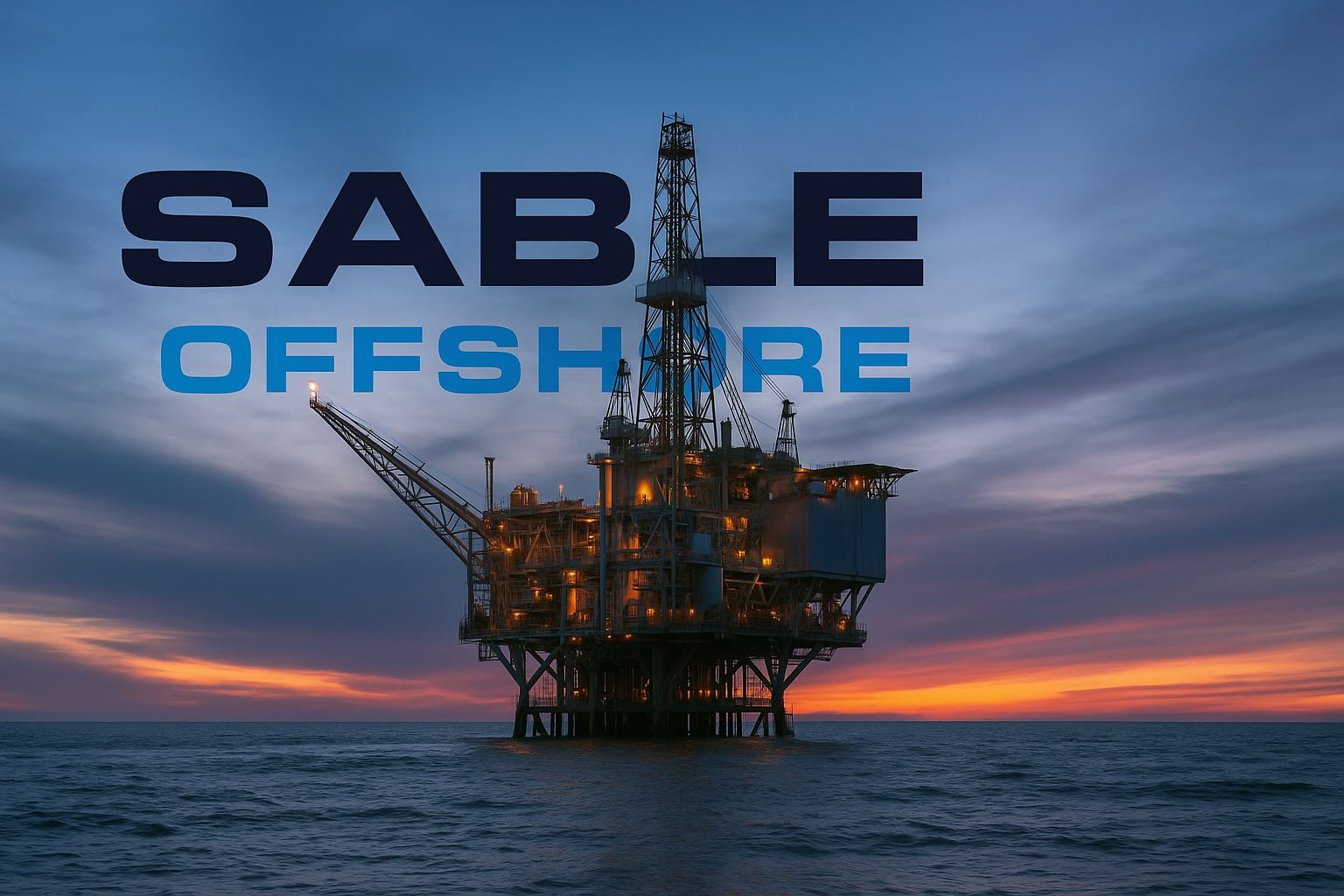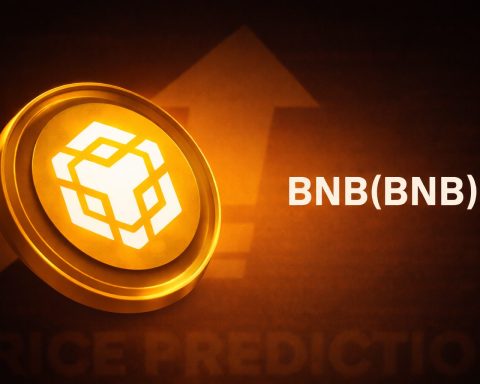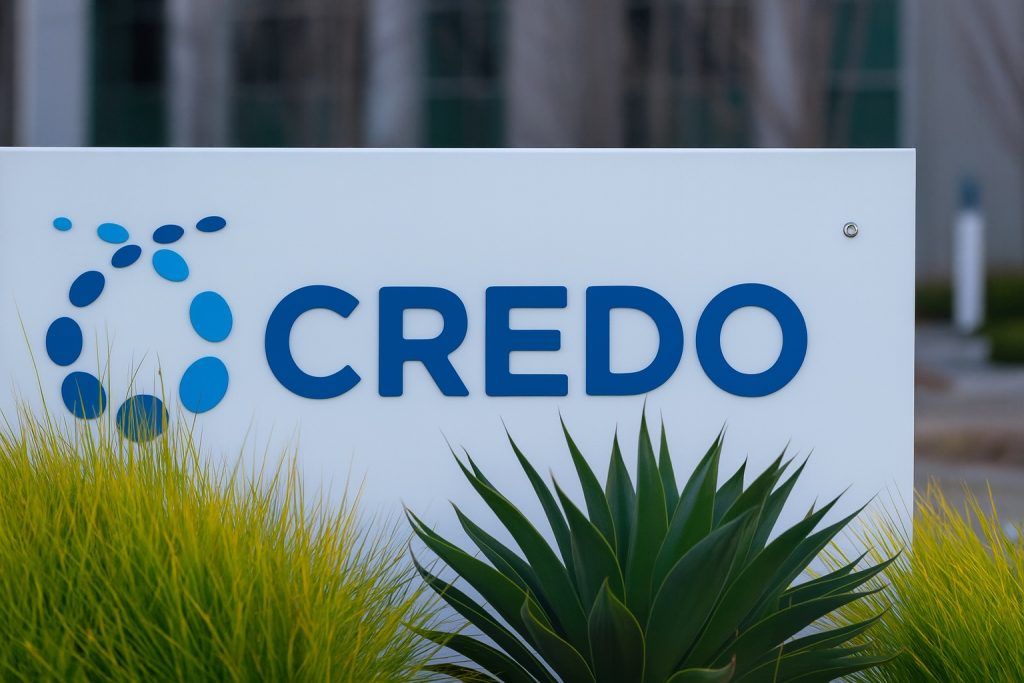- Stock Nosedives on Ruling: Sable Offshore Corp. (NYSE: SOC) shares plunged ~25% on October 15, 2025 after a California judge tentatively ruled against the company in a pivotal pipeline dispute [1]. SOC traded around $13.7 per share midday, near its 52-week low, following the adverse court decision.
- Regulatory “Green Wall”:California officials have aggressively challenged Sable’s offshore project, stalling its Santa Ynez Unit restart. In early October, the state Attorney General sued Sable, accusing it of putting “profits over environmental protections” during pipeline repairs [2]. The Santa Barbara District Attorney also filed 21 criminal charges alleging Sable violated environmental laws while fixing long-idle pipelines [3].
- Sable Fights Back: The Houston-based driller is hitting back legally. Sable filed a $347 million claim against the California Coastal Commission for “unlawful” delays to its pipeline restart [4] [5]. It also petitioned courts to exempt its project from certain new state oil regulations (like SB 237) that could impede its plans [6]. So far, judges have not sided with Sable – a tentative ruling on Oct. 15 refused to lift a state cease-and-desist order on its pipeline repairs [7] [8], a major setback for the one-field company.
- Plan B – Tankers to the Rescue: With onshore pipeline approvals stalled, Sable unveiled an alternative offtake plan. The company will “go all in” on a tanker-based strategy if California doesn’t budge soon [9]. Sable would lease an Offshore Storage & Treating (OS&T) vessel to shuttle crude oil via tankers directly to domestic or global markets, bypassing California entirely [10] [11]. This federal-waters approach, previously used in the 1980s, means delayed revenue – first oil sales by Q4 2026 with the OS&T method vs. a hoped-for Q4 2025 via pipeline [12]. CEO Jim Flores warned state leaders that California must decide soon “before Sable signs an agreement for the [offshore vessel] and goes all in on the offshore federal-only option” [13] [14].
- Experts Split on Outlook: Many analysts see high risks ahead. Clark Williams-Derry of IEEFA notes repeated setbacks have become “cumulative risk” that could burn through Sable’s cash and test investor patience [15]. A Stanford environmental law professor added that it’s “hard to see a successful path forward” given the rare united front of agencies and public opposition facing Sable [16]. Even some shareholders are wary – a stockholder rights firm launched an investigation into Sable’s board for potential mismanagement [17]. On the other hand, Wall Street’s outlook remains cautiously optimistic. According to StockAnalysis, the average analyst rating on SOC is “Buy” with a 12-month price target of $30 – implying ~70% upside from the pre-plunge price [18]. Bulls are betting Sable can eventually overcome regulatory roadblocks, aided by federal support (the Trump administration’s energy council is already “engaged” in discussions with Sable [19]) and the sheer size of the oil reserves at stake.
- Industry Headwinds & Tailwinds: Sable’s drama unfolds amid a broader tug-of-war in the energy sector. Oil prices in 2025 have been volatile, and California is striving to balance fuel supply with climate goals. In September, lawmakers passed Senate Bill 237, a compromise law that on one hand streamlines permits for up to 2,000 new wells per year in oil-rich Kern County [20], but on the other hand tightens safety rules for aging pipelines and offshore projects [21]. (Notably, SB 237 mandates that long-idle pipelines pass rigorous hydrostatic tests before restarting [22] – directly relevant to Sable’s decade-idle Las Flores line.) California’s push for clean energy has erected a “green wall” of regulatory hurdles, from costly environmental reviews to an $18 million Coastal Commission fine against Sable for Coastal Act violations [23]. Yet the state also faces pressure to stabilize gasoline supply after refinery closures [24], giving Sable a stronger argument that its project could benefit consumers. This policy whiplash creates an uncertain backdrop for Sable Offshore: high-reward potential (hundreds of millions of barrels of oil) tempered by high-regulatory risk.
Legal Ruling Triggers Stock Plunge
Sable Offshore’s stock cratered on Oct. 15 after a critical court ruling went against the company. In Santa Barbara Superior Court, Judge Thomas Anderle issued a tentative decision denying Sable’s petition to overturn a state order blocking its pipeline repairs [25] [26]. The ruling, which Sable called a “major setback,” means California’s cease-and-desist order remains in force, preventing the firm from reactivating its onshore pipeline for now.
Investors reacted swiftly. SOC shares tumbled ~26% in pre-market trading on the news [27], and the stock opened the day in free-fall. By afternoon Oct. 15, SOC hovered in the mid-$13 range – down from ~$18 the day prior and nearly 50% off its month-ago levels. This plunge pushed the stock near all-time lows, a dramatic comedown for a company that traded above $30 earlier in the year.
The court outcome underscores how tied to regulatory fortunes Sable’s valuation is. Judge Anderle’s tentative ruling found Sable “failed to meet its burden” to prove the Coastal Commission had abused its discretion in enforcing the pipeline halt [28]. In other words, California regulators appear justified (at least in this judge’s view) in their efforts to slow or stop Sable’s activities for safety and environmental review. Sable said the ruling “will not affect” its plans to restart the pipeline or offshore production and vowed to appeal if the decision is finalized [29] [30]. However, markets are clearly pricing in a longer delay and higher risk before Sable can generate revenue. With the stock in the low-teens, SOC is trading near its 52-week low of $16.26 and far below its 52-week high of $35 [31], reflecting skepticism about the project’s near-term prospects.
Mounting Challenges: Lawsuits, Charges, and “Green Tape”
Sable Offshore’s troubles didn’t arise overnight – they’ve been building throughout 2025 as the company ran into California’s “green wall” of opposition [32] [33]. Just in the past few weeks, multiple legal actions against Sable have hit the headlines:
- State Lawsuit for Water Violations: In early October, California Attorney General Rob Bonta (in concert with the Central Coast Regional Water Board) filed suit against Sable, accusing the firm of flouting environmental laws during its pipeline work [34]. The complaint claims Sable ignored the California Water Code, performing repairs and pipeline flushing operations without proper permits. It alleges Sable put “profits over environmental protections” and even misled regulators to meet deadlines [35] [36]. Regulators say Sable’s actions prevented oversight needed to safeguard water quality [37]. The AG is seeking potentially hefty fines – violations of the Water Code can incur civil penalties up to $5,000 per day [38]. Sable denies wrongdoing, insisting it complied with applicable rules, but the lawsuit paints the company as either “misinformed… or simply bamboozling” state officials [39].
- Criminal Charges: In late September, the Santa Barbara County District Attorney filed 21 misdemeanor criminal charges against Sable Offshore [40]. These charges assert that Sable “knowingly” violated state environmental laws while repairing the onshore pipelines that had been idle since the 2015 spill. Essentially, prosecutors claim Sable performed work on the pipeline system without required permits or sufficient environmental safeguards. Each charge carries potential fines or other penalties. It’s rare for an oil company to face criminal prosecution for maintenance activities – a sign of how seriously local authorities view Sable’s infractions. The company is fighting the charges in court, maintaining that it had authority under federal consent decrees to do the repairs. Nonetheless, the criminal case adds another layer of uncertainty (and possibly personal liability for managers) to Sable’s California venture.
- Regulatory Enforcement & Fines: Sable is also sparring with the powerful California Coastal Commission, which oversees coastal zone development. The Coastal Commission has long been skeptical of resuming the Santa Ynez Unit operations. In April 2025, after public hearings, the Commission issued a cease-and-desist order halting Sable’s pipeline work and pipeline startup preparations [41]. (This is the order Sable just failed to overturn in court.) Back in November 2024 and February 2025, the Commission’s Executive Director had issued similar emergency stop-work orders [42] when Sable first tried to fix the pipeline. Moreover, the Coastal Commission in mid-2025 fined Sable $18 million for proceeding with activities allegedly in violation of the Coastal Act [43]. Sable has appealed those fines and orders via both state courts and by lobbying federal officials. Until now, however, the state regulators have largely prevailed, keeping Sable’s oil trapped in storage.
- Shareholder Legal Scrutiny: Sable’s confrontational approach has even drawn concern from investors. On Oct. 1, law firm Johnson Fistel announced an investigation on behalf of Sable’s long-term shareholders, examining whether Sable’s board breached fiduciary duties [44]. Such investigations often precede shareholder lawsuits if a stock’s collapse can be tied to mismanagement or false statements. Johnson Fistel cited the series of negative disclosures and legal setbacks as potential grounds for investor claims [45]. This highlights that Sable’s challenges aren’t only coming from regulators and environmentalists – they’re also eroding investor confidence internally.
In short, Sable Offshore is besieged on all sides: state regulators, environmental groups (e.g. the Center for Biological Diversity has spoken out vehemently [46]), local prosecutors, and even its own investors have all taken action opposing the company’s moves. Grace Toohey, writing for LA Times, noted that these “mounting legal setbacks” cast “increasing doubt” on the project’s future [47] [48]. Deborah Sivas, a Stanford law professor, remarked that it’s “pretty rare” to see multiple agencies aligned in enforcement like this, warning that “these agencies don’t lightly go to litigation… and the public is strongly against offshore drilling” – making for “hard obstacles” to Sable’s plan [49]. In California’s current political climate, Sable’s bid to restart offshore oil production has become a legal quagmire.
Sable’s Response: Lawsuits & a Pivot to Plan B
Facing this onslaught, Sable Offshore isn’t backing down – instead, it’s pursuing a two-pronged response: fighting it out in court and preparing a Plan B to work around California entirely.
1. Legal Counteroffensive: Sable has launched its own litigation to challenge state authorities. The company’s core argument is that certain California agencies are overstepping their authority and unfairly hindering a federally approved project. In the ongoing case Sable Offshore Corp. v. California Coastal Commission, Sable is now seeking to quantify damages for the delays. This month, Sable asked the court for permission to amend its suit to demand “in excess of $347 million” in compensation [50] [51]. That figure represents what Sable claims it has lost – and will lose – due to the Coastal Commission’s interference with restarting the Las Flores Pipeline System. Sable cites an inverse condemnation theory, essentially accusing the state of unlawfully taking or devaluing its property by preventing operations [52].
Additionally, Sable filed a declaratory action on Sept. 29 in Kern County (a jurisdiction seen as more industry-friendly) seeking clarity on Senate Bill 237 (SB 237) [53]. SB 237 is California’s new oil law (more on this in the next section) – Sable wants a judgment that certain provisions of SB 237 “do not apply” to the Las Flores Pipeline [54]. Though details are technical, presumably Sable aims to avoid any new regulatory hurdles introduced by SB 237, such as additional reviews or safety requirements beyond what it has already done.
So far, Sable’s legal counterattacks have had limited success. The tentative court ruling on Oct. 15 not only kept the cease-and-desist in place, but if finalized, it would effectively validate the Coastal Commission’s authority to regulate Sable’s repairs [55]. That undercuts a central premise of Sable’s case. Sable says it will appeal any unfavorable verdict [56], and the fight is likely to continue in higher courts. The $347 million damages claim will also play out in court filings to come. These aggressive legal measures signal to investors that Sable is exhausting all avenues to get relief – or at least reimbursement – for the prolonged shutdown of its asset.
2. The OS&T “Workaround” – Taking CA Out of the Equation: At the same time, Sable’s management is preparing to pivot away from reliance on California’s approval. In an updated investor presentation and press release on Sept. 29, Sable unveiled an “Offshore Storage and Treating vessel” strategy as an alternative offtake solution [57] [58]. Under this plan, Sable will station a large floating storage and processing vessel in federal waters near its platforms. Crude oil produced offshore would be transferred to shuttle tankers at sea, instead of sent through the onshore pipeline to California facilities. Those tankers could then deliver oil to out-of-state refineries or export terminals. Essentially, Sable would bypass California entirely, operating under federal jurisdiction (since beyond the 3-mile state water limit) and selling oil into markets where it’s welcome.
This idea is not new – Sable notes the Santa Ynez Unit actually used an OS&T vessel from 1981–1994 for initial production [59]. (Back then, the platforms began producing before the pipeline was built, so oil was shuttled via tanker temporarily.) Given the regulatory impasse, Sable is considering reviving that method. CEO Jim Flores has been vocal that if California continues to stonewall, he’s ready to “go all-in” on the offshore federal-only option [60]. “If state approval isn’t forthcoming soon, [we’ll] haul the crude away to other markets,” Flores told Bloomberg [61] [62]. He has also been lobbying that California should cooperate so that “California consumers come first” – i.e. it would be better for the state to get this oil via pipeline than have it shipped overseas [63].
Switching to an OS&T system has significant implications. Timeline: It would delay Sable’s first revenue by roughly a year. The company estimates that using the OS&T strategy, first commercial oil sales wouldn’t occur until Q4 2026, versus as early as Q4 2025 if the pipeline were approved soon [64]. Sable expects to sign a lease for a suitable vessel by end of 2025, with deployment in late 2026 [65]. Volume: Once in place, the OS&T could handle 50,000+ barrels per day from all three platforms [66], allowing Sable to ramp up to full production. Market: Importantly, this route gives Sable the freedom to sell globally. While the pipeline would feed California refineries exclusively, tankers could take Santa Ynez oil to the highest bidders (which might be in Asia or the Gulf Coast). In fact, this prospect concerns California officials – it means lost local supply and tax revenue. An energy investor, Porter Collins of Seawolf Capital, noted that if Sable goes offshore-only, “those barrels are shipped to other markets” and California loses out; he argues “the oil is coming out of the ground one way or another… The pipeline is the obvious answer” to keep benefits in-state [67] [68].
There’s a broader political angle too: Federal support. The Trump administration (which took office in January 2025) appears sympathetic to Sable’s plight. Bloomberg reports that Trump’s National Energy Dominance Council, led by Interior Secretary Doug Burgum and Energy Secretary Chris Wright, is “engaged in discussions” with Sable to help advance the tanker plan [69]. Sable has already submitted an updated development plan to the U.S. Bureau of Ocean Energy Management outlining the OS&T scenario [70]. Any federal fast-tracking or workaround could pit Washington against Sacramento in a classic states’ rights clash over energy. Environmental groups decry Sable’s tanker gambit as “a deliberate attempt to evade state oversight” and are urging California to hold firm [71]. But with high fuel prices and energy security in focus, the political winds now differ from those of prior administrations. Sable is clearly hoping a friendly federal government will counterbalance California’s resistance.
In summary, Sable Offshore is effectively saying: “We prefer Plan A (restart the pipeline ASAP), but we’re ready to execute Plan B (tankers) if we must.” It will continue pursuing both paths in parallel [72]. This dual-track strategy is costly – maintaining idle production, leasing a vessel, fighting lawsuits – but Sable’s leadership seems determined to unlock the Santa Ynez oil, one way or another. Investors now have to judge whether Plan B can preserve value if Plan A remains stuck in limbo.
Market Reactions and Expert Analysis
Investor sentiment on SOC has whipsawed along with these developments. The recent court defeat and tanker pivot have undoubtedly spooked some investors – short sellers have increased positions, with short interest climbing back to ~15% of float in October (after dropping to 4% in the summer) [73]. Options trading around SOC has been volatile as well; implied volatility surged above 100% as traders bet on big moves tied to legal outcomes [74] [75]. For instance, ahead of the Oct. 15 ruling, bearish bets via put options spiked, anticipating a drop below the $18 level [76] [77]. That bet paid off when SOC cracked below $18. On the flip side, some contrarians have snapped up call options hoping for a relief rally if any positive news emerges [78] [79]. The trading action underscores that Sable’s stock is highly news-driven – essentially trading as a proxy for the legal/regulatory outcome.
Wall Street analysts, however, are still generally bullish in their formal ratings. The consensus 12-month price target is $30 [80], which assumes Sable eventually gets to sell its oil (whether by pipeline or tanker). This bullish outlook hinges on the massive reserves in the Santa Ynez Unit: Sable estimates over 100 million barrels recoverable, a prize that could generate substantial cash flow if a route to market opens. At a stock price in the teens, some see a bargain with multi-bagger potential if the project succeeds. Indeed, two analysts recently reiterated “Buy” ratings, citing optimism that either California will relent under pressure or the federal workaround will come through (these analyses were reported prior to the latest court setback, it should be noted).
Nonetheless, independent experts and energy analysts urge caution. “Sable is at risk of burning through its cash” before it ever achieves oil sales, warned Clark Williams-Derry of the Institute for Energy Economics and Financial Analysis [81]. He described the situation as a race against time and investor patience. Sable had roughly $50 million in cash (per its last SEC filing) and some credit available, but it has ongoing costs to maintain the platforms and storage, in addition to legal and regulatory expenses. Every month of delay bleeds money with no revenue coming in. Williams-Derry characterized the series of setbacks as creating a “cumulative risk” that might ultimately scare off the financiers needed to fund final startup costs [82].
Stanford’s Deborah Sivas was even more blunt, saying “it’s getting harder to see a successful path forward for Sable.” She noted that rarely do so many agencies and stakeholders line up against a project like this [83]. The Coastal Commission, State Fire Marshal, Water Board, local governments, environmental NGOs, and public opinion in California are all aligned in opposition or deep skepticism. That formidable front, combined with California’s broader climate policy momentum, means Sable faces an uphill battle to ever operate in the state. “No corporation should gain a business advantage by ignoring the law and harming the environment,” admonished the chair of the Water Board in a statement on the state’s enforcement action [84]. Such sentiment is widely shared in California’s leadership.
From the investor side, not everyone is abandoning ship. Notably, Porter Collins (known for co-founding Seawolf Capital and earlier being one of “The Big Short” investors) has taken a long position in Sable [85]. Collins believes the oil will eventually flow and that California, faced with losing local supply, will opt for the lesser of two evils. “The oil is coming out of the ground one way or another,” he said, pointing out that the federal government also has incentive to support production (through royalties and desire for lower gas prices) [86]. His view is that the pipeline solution is obvious and will ultimately happen, even if delayed [87]. Investors like Collins are effectively betting on a resolution – whether via court victory, political deal, or sheer economic necessity – that unlocks value in SOC. They also note that Sable’s management is experienced in California operations and navigating regulatory mazes (the team includes former industry execs who have dealt with California’s stringent rules before).
In the meantime, the market may continue to seesaw on headlines. Any hint of progress (e.g. a favorable court ruling on appeal, a settlement with the state, or federal intervention) could spark a sharp rebound in SOC stock. Conversely, continued delays or adverse decisions (such as the finalization of the tentative ruling, or new enforcement actions) could push the stock down further into the single digits. Volatility is likely to remain high, given the binary-looking risk/reward profile. Traders are watching technical levels too – one analysis noted $16.26 (the 52-week low) as key support and ~$24 as a resistance where the 200-day moving average sits [88] [89]. Until Sable’s path forward is clearer, SOC will trade more on courtroom updates than on traditional fundamentals like earnings (the company currently has almost no revenue and significant losses, as it awaits a restart) [90].
Financial Outlook and Industry Context
Looking beyond the immediate legal storm, what is the bigger picture for Sable Offshore and its industry? On the financial front, Sable’s prospects hinge on it transitioning from a development-stage company to an operating producer. If it can begin selling oil, even at partial capacity, it could flip from heavy losses to significant cash generation given oil’s value. Oil prices in 2025 have been relatively strong – recently around $80 per barrel for Brent crude (up from lows earlier in the decade). Global supply worries (like OPEC+ cuts and geopolitical tensions) have kept prices buoyant [91] [92]. Sable’s Santa Ynez crude would presumably fetch a price in line with global benchmarks. Thus, market conditions are arguably favorable for Sable if it can come on-line: California’s gasoline prices are among the highest in the nation, and refineries have been hungry for more local crude to replace declining in-state production [93] [94]. This is one reason the state government made an unexpected policy pivot in late 2025 with SB 237.
Senate Bill 237, signed by Governor Newsom on Sept. 19, 2025, reflects the contradictory forces in California’s energy policy. The law was part of a last-minute deal to address fuel supply stability while still upholding climate objectives [95]. On one hand, SB 237 is a boon to the oil industry: it authorizes up to 2,000 new oil well permits per year in Kern County (the state’s oil heartland) by streamlining environmental reviews [96]. Essentially, it outsources more drilling approvals to Kern County’s local process, short-circuiting some of the state-level hurdles. This was cheered by companies like California Resources Corp., which can now invest in new drilling with more certainty. On the other hand, SB 237 tightened rules for offshore and pipeline operations: It explicitly requires any oil pipeline idle 5+ years to undergo rigorous “spike” hydrostatic testing before restarting [97], among other safety measures. It also clarified that restarting dormant offshore infrastructure would face enhanced scrutiny, which in practice bolsters agencies like the Coastal Commission and State Fire Marshal in cases like Sable’s [98]. In fact, SB 237’s legislative findings mention the Santa Ynez Unit by name, emphasizing the need for caution and updated standards if those pipelines are to carry oil again [99].
For Sable, SB 237 is a mixed bag. The company completed extensive repairs and safety upgrades on its pipeline over the past year – including installing new safety valves, performing hydrostatic tests, and complying with a federal consent decree’s requirements [100] [101]. Sable asserts it has “satisfied all operational conditions” for a safe restart [102]. SB 237 effectively codifies some of those conditions into law (like the hydro-test), which Sable has done, but it could also mean additional state oversight that Sable hoped to avoid. Notably, Sable’s recent court filing in Kern County seeks confirmation that parts of SB 237 “do not apply” to its project [103] – likely an attempt to prevent new legal arguments that Sable must, for example, obtain fresh permits under SB 237 or wait for certain studies. It’s an ironic twist: SB 237 was promoted as a way to “utilize idle pipelines” and boost supply [104] [105] (a nod to getting Santa Ynez oil flowing), yet Sable fears the law could introduce new delays.
Broader industry trends also influence Sable’s outlook. The offshore drilling sector has been recovering after years of downturn, thanks to higher oil prices, but California is an outlier with its political opposition to fossil fuel projects. Many major oil companies have scaled back or exited California offshore endeavors due to regulatory uncertainty and public opposition (ExxonMobil, for instance, sold these Santa Ynez assets to Sable/Flame Acquisition in 2024 to cut its losses). In contrast, places like the Gulf of Mexico or offshore Brazil are seeing renewed investment. Sable’s singular focus on a California offshore project thus carries extra risk – it’s a one-asset company, and that asset is in a jurisdiction notoriously tough on oil.
On the flip side, if Sable can survive the gauntlet, it stands to benefit from California’s continued need for oil in the medium term. California still consumes a significant amount of gasoline and diesel; two local refineries have closed recently, increasing reliance on imports [106]. The state’s climate goals (carbon neutrality, EV adoption) are decades out, and in the meantime California has faced fuel price spikes and even asked OPEC to boost output in some instances. Sable argues that its project could provide “immediate economic relief to California residents” by supplying crude to local refineries and stabilizing the regional fuel market [107]. This argument gained a bit of traction in Sacramento – SB 237’s passage shows some acknowledgement that restricting supply has costs. Furthermore, the geopolitical environment (with global conflicts and OPEC’s policies) keeps energy security in the headlines. A domestic source of oil off California could be seen more favorably if gasoline hits $7–$8 a gallon again.
In summary, Sable Offshore Corp. stands at a crossroads. The next few weeks and months will be critical: a final court ruling on the pipeline case, potential appeals, behind-the-scenes negotiations with state and federal officials, and the initial moves to procure an OS&T vessel. For now, investors have been rattled – the stock’s sharp drop on Oct. 15 reflects a realization that the legal roadblocks are more intractable than hoped. The company’s fate will depend on whether it can either find a compromise with California or successfully execute its end-run via federal waters. Until then, SOC remains a high-risk, high-reward story. As one analyst quipped, “Sable Offshore is effectively a courtroom drama disguised as a stock” – and the final act has yet to play out.
Sources: Sable Offshore official press releases [108] [109]; Business Wire and Reuters news on the Oct. 15 court ruling [110] [111]; Los Angeles Times reporting on California’s legal actions [112] [113] and expert commentary [114]; World Oil/Bloomberg interview with CEO Jim Flores [115] [116] and investor perspectives [117]; StockAnalysis market data on SOC (price targets, 52-week range) [118] [119]; Greenberg Glusker Law summary of SB 237 provisions [120] [121].
References
1. www.reuters.com, 2. www.latimes.com, 3. www.latimes.com, 4. www.businesswire.com, 5. www.businesswire.com, 6. www.businesswire.com, 7. www.reuters.com, 8. www.reuters.com, 9. www.worldoil.com, 10. sableoffshore.com, 11. www.worldoil.com, 12. sableoffshore.com, 13. www.latimes.com, 14. www.latimes.com, 15. www.latimes.com, 16. www.latimes.com, 17. stockanalysis.com, 18. stockanalysis.com, 19. www.worldoil.com, 20. www.gtlaw.com, 21. www.latimes.com, 22. www.gtlaw.com, 23. www.latimes.com, 24. www.gtlaw.com, 25. www.reuters.com, 26. www.reuters.com, 27. www.reuters.com, 28. www.reuters.com, 29. www.reuters.com, 30. www.reuters.com, 31. stockanalysis.com, 32. www.latimes.com, 33. www.latimes.com, 34. www.latimes.com, 35. www.latimes.com, 36. www.latimes.com, 37. www.latimes.com, 38. www.latimes.com, 39. www.latimes.com, 40. www.latimes.com, 41. www.reuters.com, 42. www.reuters.com, 43. www.latimes.com, 44. stockanalysis.com, 45. stockanalysis.com, 46. www.worldoil.com, 47. www.latimes.com, 48. www.latimes.com, 49. www.latimes.com, 50. www.businesswire.com, 51. www.businesswire.com, 52. www.businesswire.com, 53. www.businesswire.com, 54. www.businesswire.com, 55. www.reuters.com, 56. www.reuters.com, 57. sableoffshore.com, 58. sableoffshore.com, 59. sableoffshore.com, 60. www.latimes.com, 61. www.worldoil.com, 62. www.worldoil.com, 63. www.worldoil.com, 64. sableoffshore.com, 65. sableoffshore.com, 66. sableoffshore.com, 67. www.worldoil.com, 68. www.worldoil.com, 69. www.worldoil.com, 70. www.reuters.com, 71. www.worldoil.com, 72. sableoffshore.com, 73. www.worldoil.com, 74. www.ainvest.com, 75. www.ainvest.com, 76. www.ainvest.com, 77. www.ainvest.com, 78. www.ainvest.com, 79. www.ainvest.com, 80. stockanalysis.com, 81. www.latimes.com, 82. www.latimes.com, 83. www.latimes.com, 84. www.latimes.com, 85. www.worldoil.com, 86. www.worldoil.com, 87. www.worldoil.com, 88. www.ainvest.com, 89. www.ainvest.com, 90. stockanalysis.com, 91. ts2.tech, 92. ts2.tech, 93. www.gtlaw.com, 94. www.gtlaw.com, 95. www.latimes.com, 96. www.gtlaw.com, 97. www.gtlaw.com, 98. www.latimes.com, 99. www.gtlaw.com, 100. sableoffshore.com, 101. sableoffshore.com, 102. sableoffshore.com, 103. www.businesswire.com, 104. www.gtlaw.com, 105. www.gtlaw.com, 106. www.gtlaw.com, 107. sableoffshore.com, 108. www.businesswire.com, 109. sableoffshore.com, 110. www.reuters.com, 111. www.reuters.com, 112. www.latimes.com, 113. www.latimes.com, 114. www.latimes.com, 115. www.worldoil.com, 116. www.worldoil.com, 117. www.worldoil.com, 118. stockanalysis.com, 119. stockanalysis.com, 120. www.gtlaw.com, 121. www.gtlaw.com








